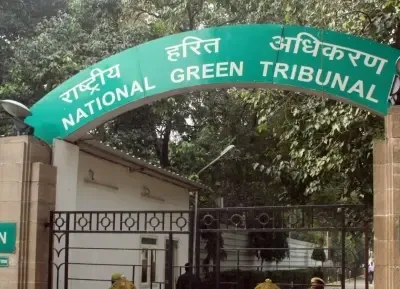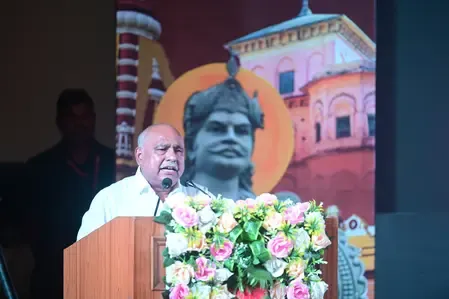How is Gujarat's Lift Pipeline Technology Enhancing Irrigation?

Synopsis
Key Takeaways
- Lift Pipeline Technology revolutionizes irrigation in Gujarat.
- Investment of Rs 5,115 crore enhances tribal agriculture.
- Year-round water access boosts farmers' productivity.
- Supports Vanbandhu Kalyan Yojana for community development.
- Minimizes water wastage and labor needs.
Gandhinagar, Nov 7 (NationPress) The Gujarat government has adopted the groundbreaking Lift Pipeline Technology, transforming irrigation in remote and mountainous regions. Over the last seven years, the state has allocated Rs 5,115 crore to enhance irrigation across more than 1,39,510 acres of agricultural land in tribal areas.
Under the leadership of Chief Minister Bhupendra Patel, the state has expedited the implementation of this innovative irrigation method, investing over Rs 2,212 crore in merely the last three years (2023–2025).
In the previous four years (2019–2022), an investment of Rs 2,903 crore was made to enhance irrigation infrastructure and improve water accessibility for farmers in tribal regions.
Emphasizing the government's commitment to tribal development and agricultural advancement, Gujarat's Water Resources and Water Supply Minister Ishwarsinh Patel stated: "Agriculture and the welfare of farmers are our top priorities. Our visionary leader, Prime Minister Narendra Modi, initiated the Vanbandhu Kalyan Yojana during his tenure as Gujarat’s Chief Minister. Through this program and the implementation of lift pipeline technology, we have successfully secured year-round irrigation for 708 villages across six tribal districts. Under Vanbandhu Kalyan Yojana 2.0, several significant projects worth Rs 3,779 crore are underway to provide irrigation for an additional 1,44,164 acres of agricultural land in remaining tribal areas, slated for timely completion.
The Vanbandhu Kalyan Yojana has emerged as a transformative initiative for tribal communities. Before the lift pipeline system was introduced, irrigation in these areas was sporadic and limited, making farmers susceptible to unpredictable rainfall. Today, due to this initiative, farmers benefit from continuous access to water, allowing them to grow multiple crops each year. This has not only boosted their agricultural productivity but has also improved their income, lifestyle, and overall quality of life.
Building on the achievements of the initial phase, Vanbandhu Kalyan Yojana 2.0 aims to extend these advantages to all tribal regions, with numerous new projects currently being developed.
Lift pipeline technology is particularly beneficial in areas where water sources are situated below the farmland, such as hilly or dry regions. This system utilizes a network of pipelines and pumping mechanisms to elevate water from reservoirs or rivers to higher ground, ensuring a steady and regulated supply directly to the fields.
This contemporary irrigation approach minimizes water wastage, as water is conveyed through closed pipes instead of open channels. It also reduces the need for manual labor, enhances water efficiency, and increases crop yields through consistent irrigation.









